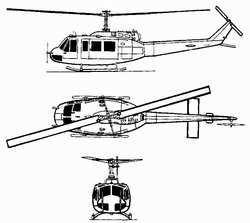The FAA, Industry and Airplane Parts
An airplane is a highly
complex machine depending on thousands or even millions of parts to
fly safely. As part of its regulatory responsibility, the Federal
Aviation Administration (FAA) works closely with industry to make
sure that unapproved parts don’t threaten today’s
all-time-high aviation safety record.
Many of the methods for designing and producing major aircraft
products, such as airframes, engines and propellers, need specific
FAA approval. The FAA grants approvals only after a stringent
review of design criteria, facilities, processes and quality
control systems. The agency continually monitors firms that have
these production approvals to ensure they comply with regulations
and the terms of their approvals.
Some approved parts don’t need specific FAA sanction. For
example, the owner or operator of an aircraft can produce parts to
maintain or alter their own product. Manufacturers often OK the use
of “standard parts,” such as nuts and bolts, that meet
specified industry-accepted criteria. Maintenance personnel also
can make parts in the course of their aircraft repair work as long
as such parts meet applicable design criteria. All these parts must
comply with regulations and meet industry standards.
What’s a “SUP?”
 Occasionally, parts that may not
meet applicable requirements enter the aviation system. They can
range from parts that lack proper documentation to parts that are
actually counterfeit. Until the FAA determines whether items
actually meet requirements, the agency calls them suspected
unapproved parts, or “SUPs.”
Occasionally, parts that may not
meet applicable requirements enter the aviation system. They can
range from parts that lack proper documentation to parts that are
actually counterfeit. Until the FAA determines whether items
actually meet requirements, the agency calls them suspected
unapproved parts, or “SUPs.”
SUPs can be parts rejected during production because of defects;
parts for which required documentation is missing; parts that have
been improperly maintained; and parts from military aircraft that
have not been shown to comply with FAA requirements. Suspect
unapproved parts may also include items from a supplier who
produces parts for an approved manufacturer and then ships them
directly to end users without the approved manufacturer’s
authorization; there is no guarantee that they meet all quality
control requirements.
Counterfeit parts may be new parts that are deliberately
misrepresented as designed and produced under an approved system or
other acceptable method. Counterfeit parts also may be used
approved parts that have reached a design life limit or have been
damaged beyond possible repair, but are altered and deliberately
misrepresented as acceptable.
None of these types of parts should be installed on an
aircraft.
Investigating SUP
To help guard against
use of unapproved parts, the FAA created a special SUPs program in
1995. A special SUPs office, located in the Washington, DC area,
coordinates the FAA’s efforts to identify, investigate and
ultimately remove any such parts from spares stocks, or
occasionally, from aircraft themselves.
SUPs are detected and reported in various ways. Anyone in the
aviation community may directly notify the FAA using a special form
or call in a complaint to the Aviation Safety Hotline
(1-800-255-1111). FAA employees may discover SUPs
during accident or incident investigations or routine surveillance
activities.
The FAA categorizes suspect unapproved parts according to their
potential effect on the safe operation of an aircraft. Category 1
parts are the most safety-critical; they could cause the crew to
use emergency procedures if they fail during flight. Category 2 and
3 parts have less impact on aircraft safety, but the agency still
checks them out thoroughly.
The SUP Detectives
The most important goals of a SUPs investigation are to trace
suspect parts to their source, determine whether they pose a threat
to aviation safety, and if so, take corrective action and remove
them from the system. FAA investigators gather photographic
evidence, copies of records and witness statements. Parts given to
the inspector during the course of an investigation are officially
cataloged. Investigators write detailed narratives to document the
scope of the investigation and their findings. If criminal activity
is suspected, the FAA coordinates its investigation with
appropriate law enforcement authorities.
If the investigation determines a part is truly unapproved,
several things happen. The unapproved parts must be accounted for
or the potential end users must be notified. If end users cannot be
notified directly, then the FAA sends out an Unapproved Parts
Notification (UPN) alerting the aviation community to the problem.
UPNs advise that the parts be deactivated or removed, depending on
the type of aircraft.
UPNs reach a wide audience with Internet postings, e-mail and
regular mail. Nearly 5,200 FAA employees and other federal workers
receive UPNs via a mass e-mail. Another 56,000 have requested to
receive them automatically from an FAA safety site. And
approximately 5,000 repair stations and foreign civil aviation
authorities receive UPNs by regular mail. Several associations also
publish newly released UPNs in their newsletters, and when
warranted, UPNs appear in FAA Advisory Circular 43-16.
Unapproved parts located in inventories should be immediately
removed or segregated to prevent inadvertent installation. Air
carriers and other operators should have procedures in place to
segregate these parts so they won’t be installed on
aircraft.
If the FAA determines that a manufacturer, air carrier or other
user violated Federal Aviation Regulations regarding approved
parts, they could be subject to anything from a warning letter to a
stiff fine. In the case of criminal activity, the appropriate law
enforcement authority and judicial system can pursue the case.
 ANN's Daily Aero-Linx (04.15.24)
ANN's Daily Aero-Linx (04.15.24) Classic Aero-TV: 'No Other Options' -- The Israeli Air Force's Danny Shapira
Classic Aero-TV: 'No Other Options' -- The Israeli Air Force's Danny Shapira Aero-News: Quote of the Day (04.15.24)
Aero-News: Quote of the Day (04.15.24) Airborne 04.16.24: RV Update, Affordable Flying Expo, Diamond Lil
Airborne 04.16.24: RV Update, Affordable Flying Expo, Diamond Lil ANN's Daily Aero-Term (04.16.24): Chart Supplement US
ANN's Daily Aero-Term (04.16.24): Chart Supplement US



